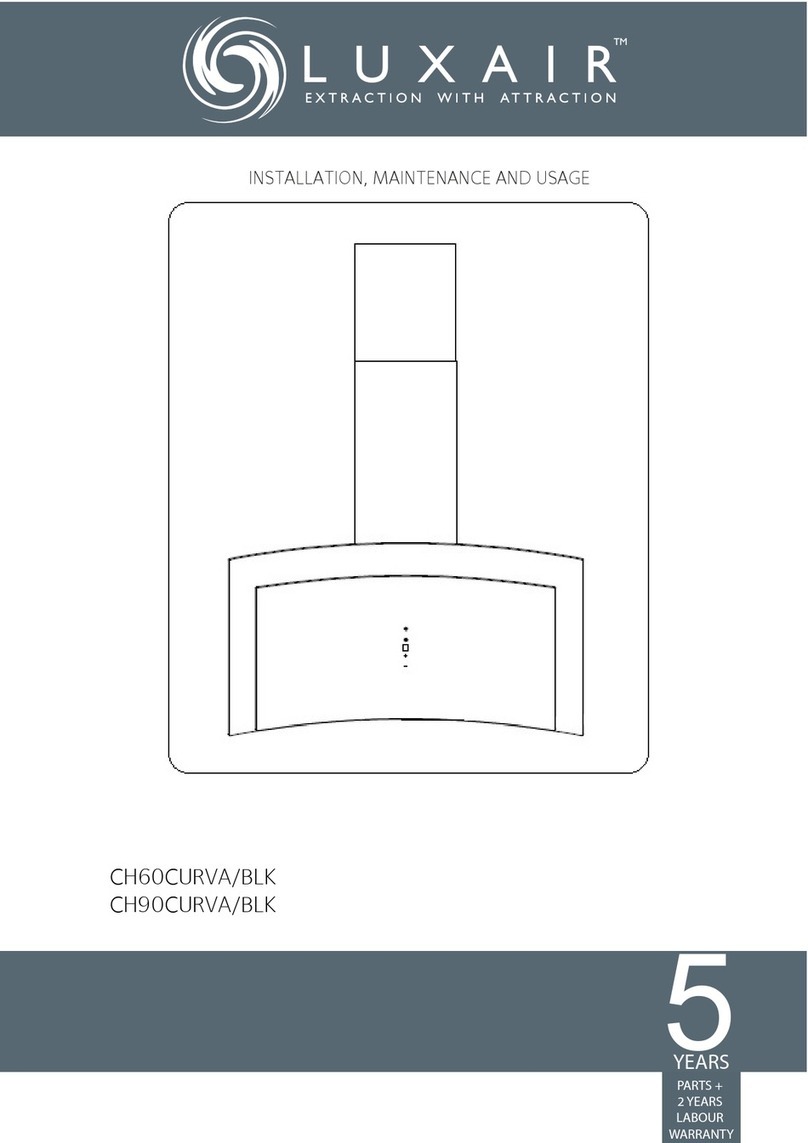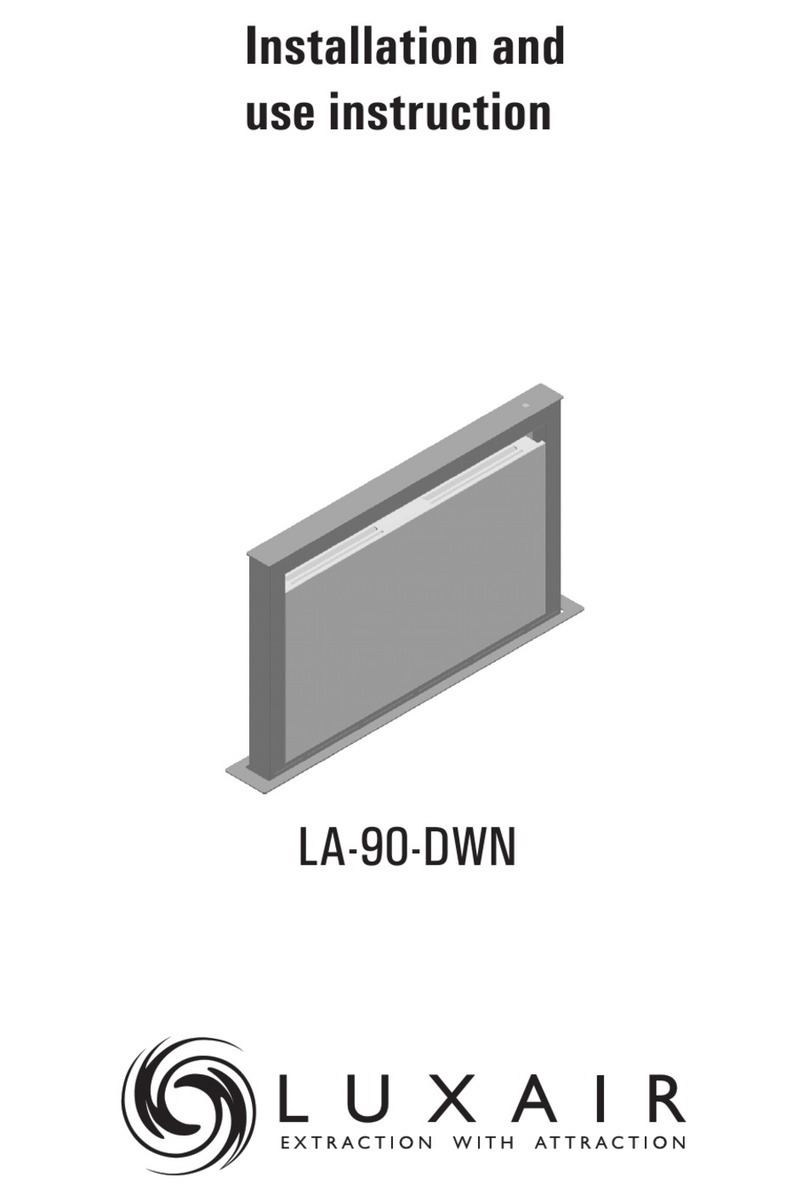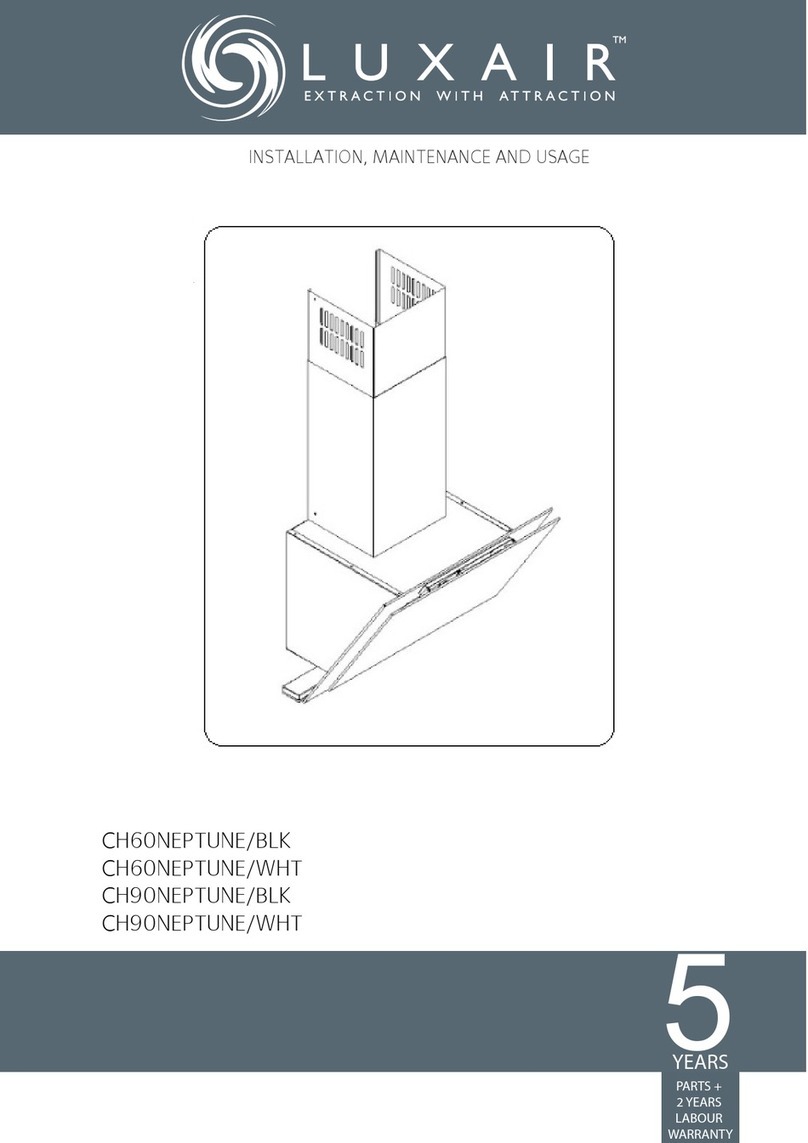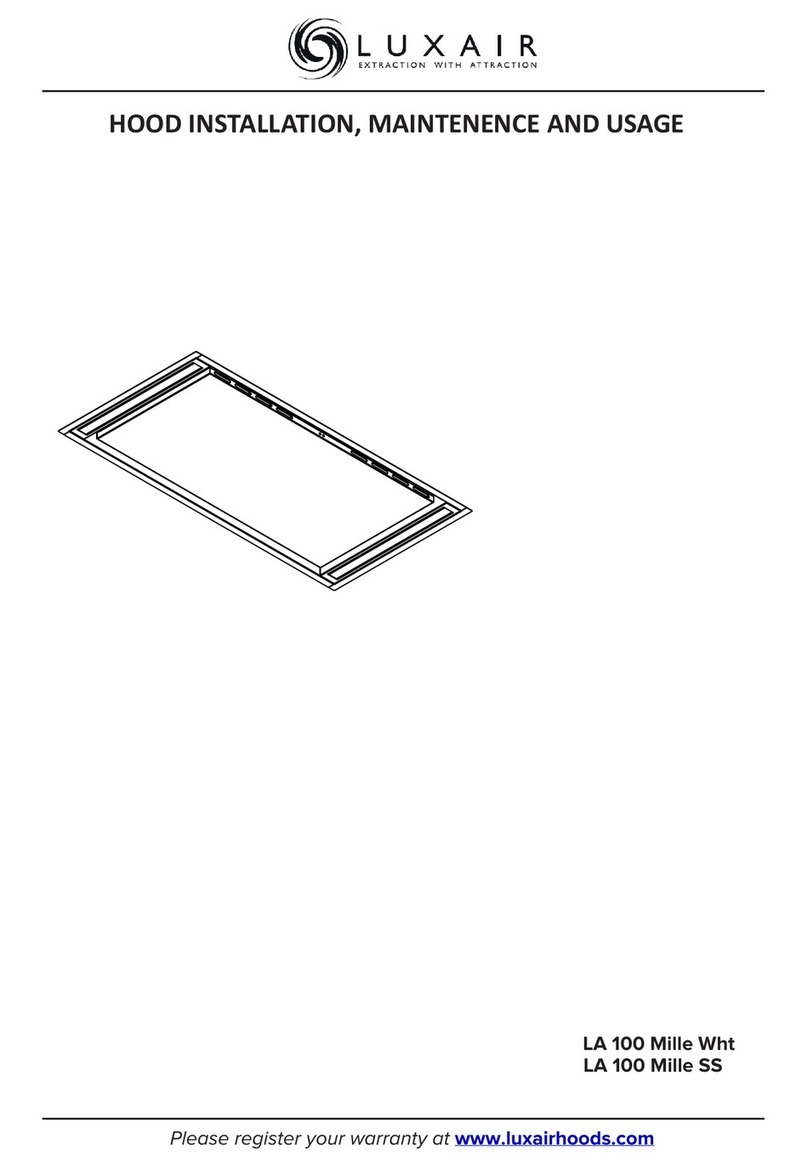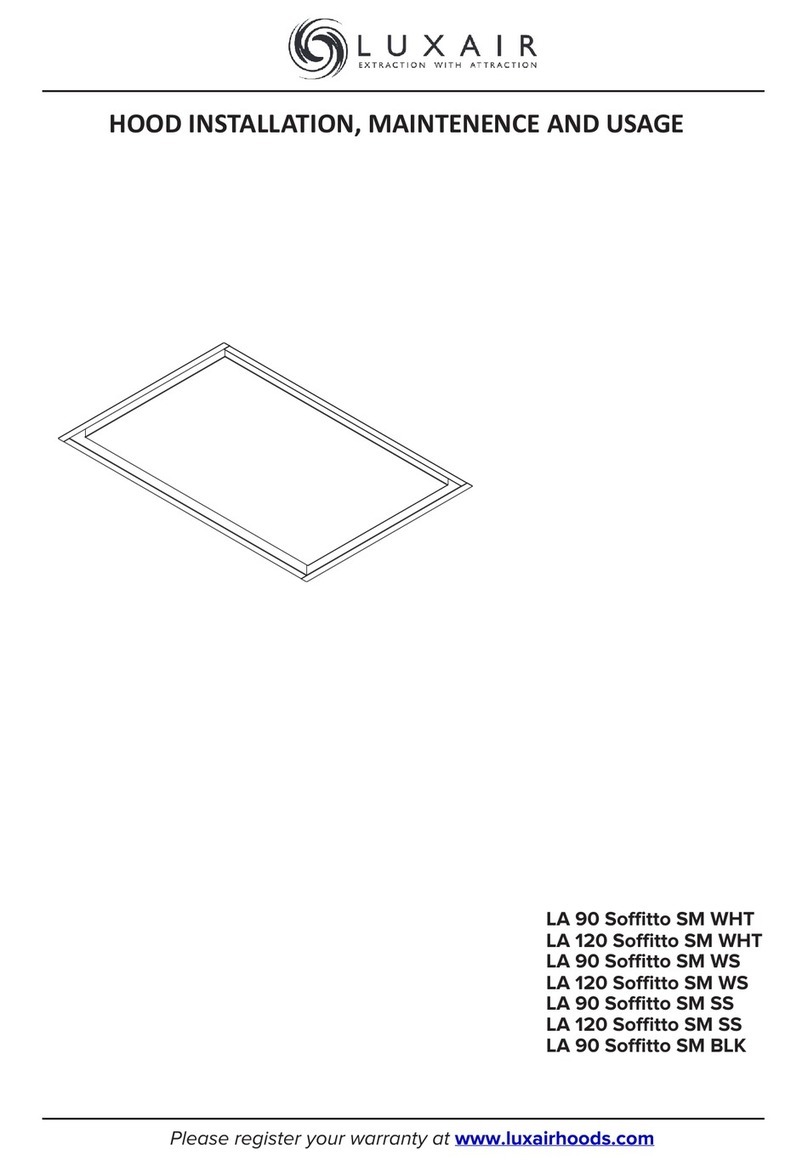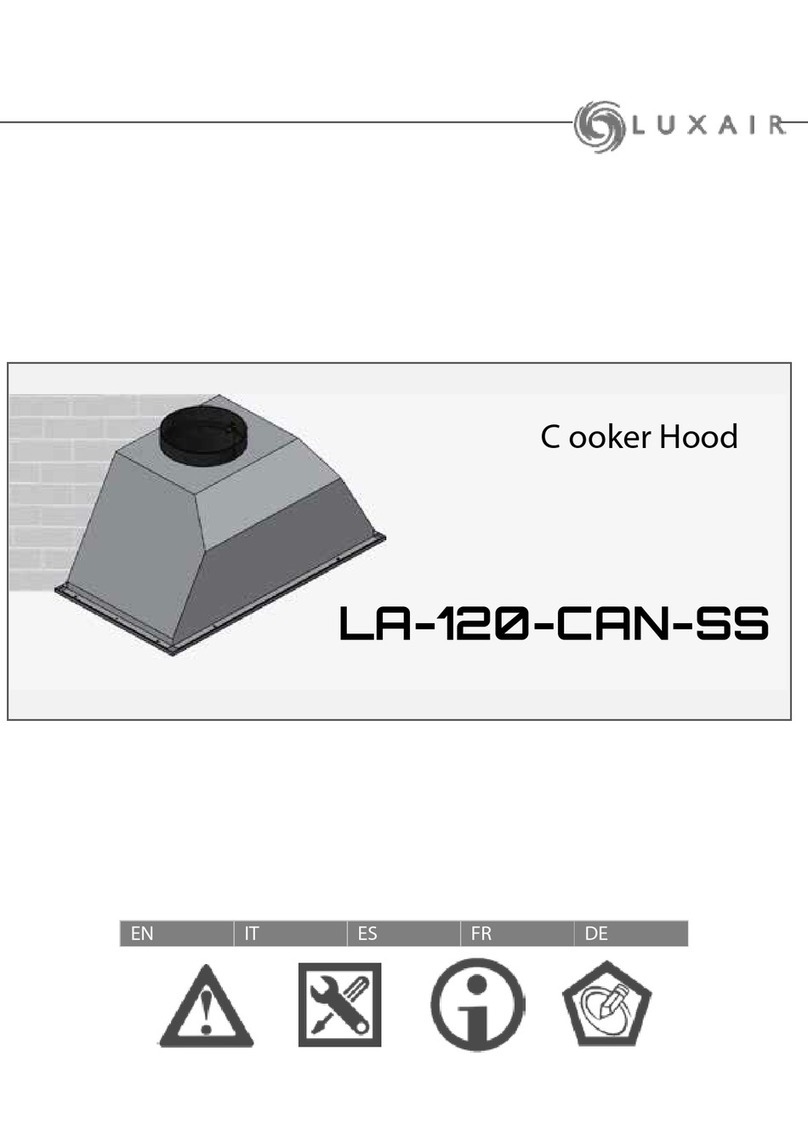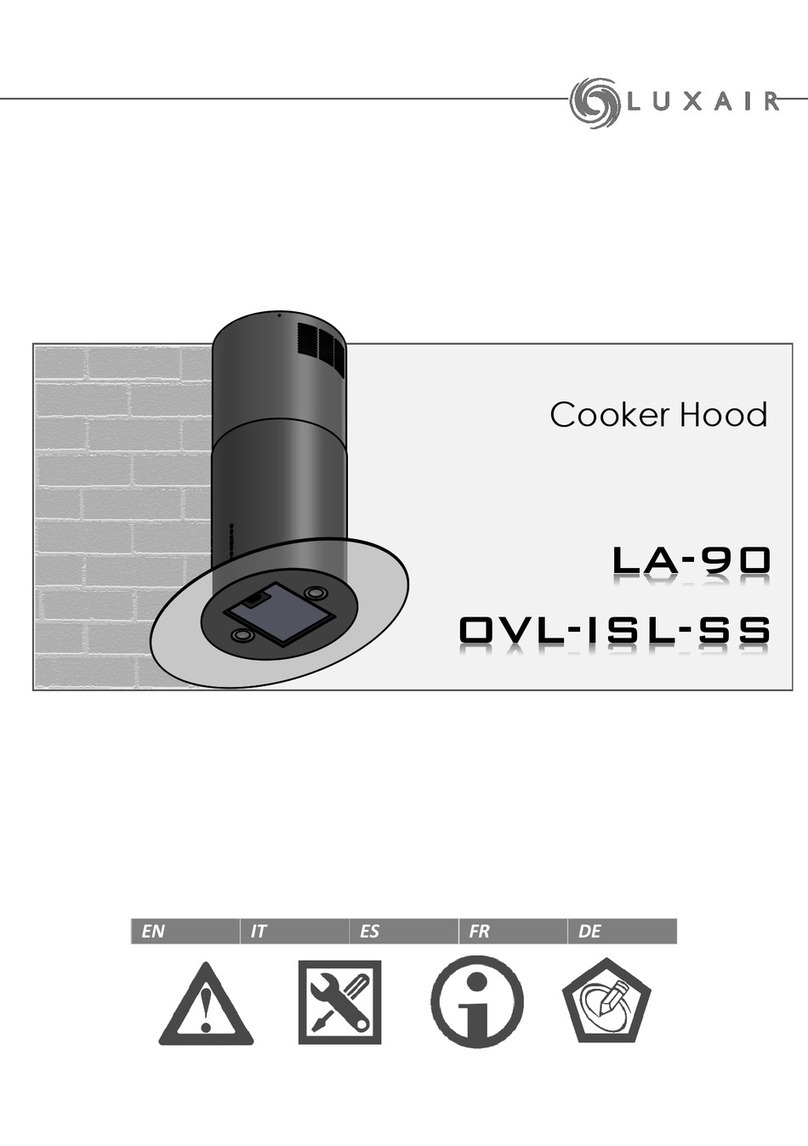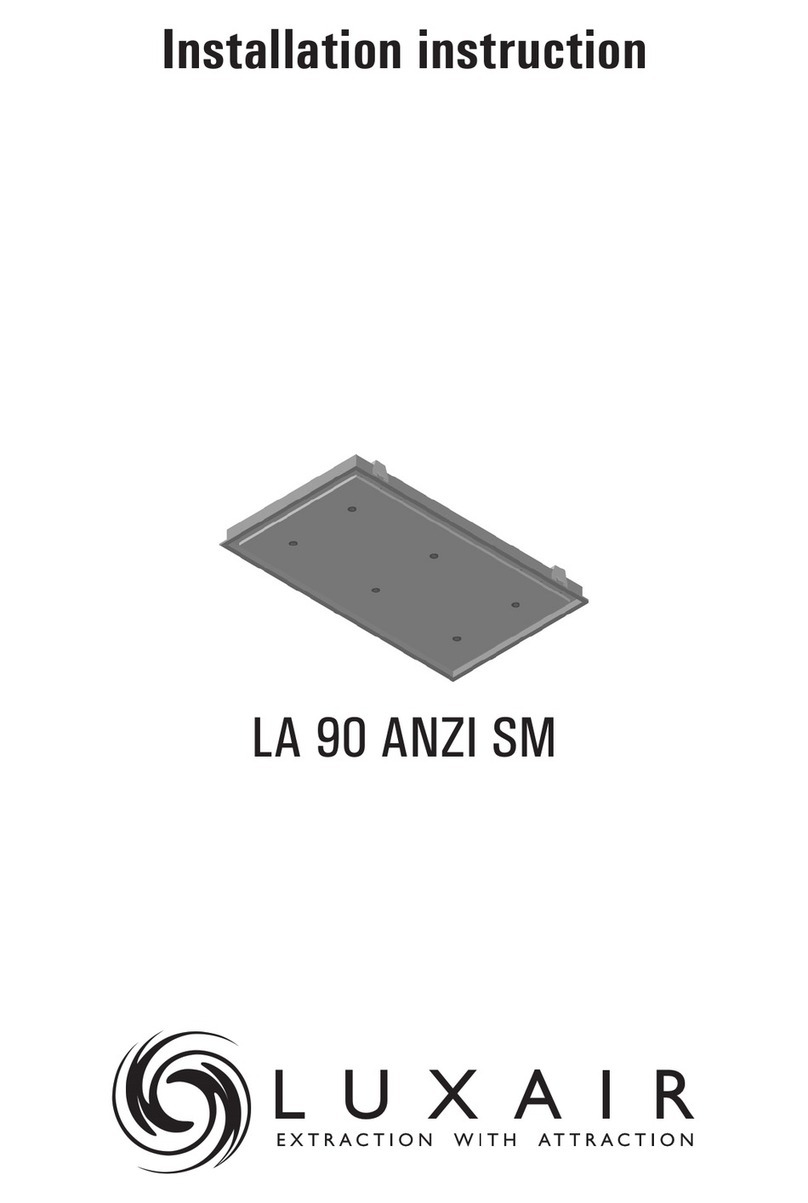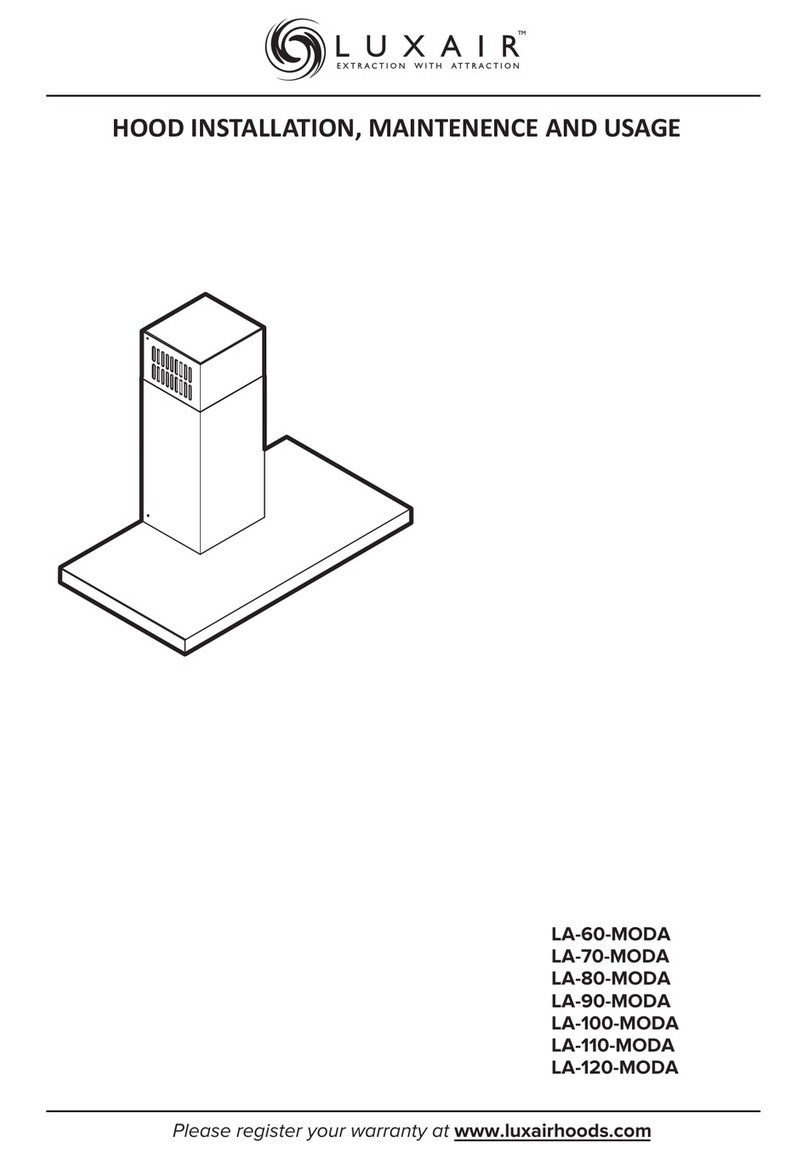11
SAFETY
- Do not do flambé cooking under the hood
- Constantly check while using the fryers because overheated oil can catch fire
- Prior to any cleaning operation, disconnect the unit from electrical power by pulling the plug or operating the switch
- If in the room the hood is simultaneously used with other appliances that give off fumes, not powered by electricity, the room should be
provided with ventilation
- Avoid having free turned on stoves (not used)
- Limit the use of the hood to its designed purpose: removal of cooking odours; do not use it for other purposes
- It is recommended to start the hood shortly before performing any cooking operation and to let it run after cooking for at least 15
minutes and anyway until the odour has disappeared
- Use only a wet cloth and neutral liquid detergent
- Avoid soaked clothes and sponges, water jets, thinners, solvents, alcohol and abrasives
- Prior to any maintenance operation, disconnect the unit from electrical power by pulling the plug or operating the switch
- Do not connect the appliance to exhaust ducts carrying combustion fumes produced from combustion powered by energy other than
electricity
- A proper use without risks is achieved when the maximum negative pressure in the room does not exceed 4Pa
- Firmly secure the hood to the ceiling of the kitchen, taking into account the dimensions provided in the technical design, using the
supplied screws
- Check that the mains voltage is adequate to the requested one for the supply of the hood, as indicated by the plate placed inside the
appliance
- This unit is not intended for use by persons (including children) with reduced physical, sensory or mental capabilities, or lack of
experience and knowledge, unless they have been instructed with regard to the use of the device and are supervised by a person
responsible for their safety. Children should be supervised in order to make sure they do not play with the appliance.
- The room must have sufficient ventilation when the hood is used simultaneously with other appliances that use gas or other fuels
- There is the possibility of fire if cleaning operations are not done according to the instructions
- WARNING: accessible parts may become hot when using the hob.
Cleaning
- Use only and exclusively a wet cloth and neutral liquid detergent
- Avoid soaked clothes and sponges, water jets, thinners, solvents, alcohol and abrasive substances
- It is necessary to clean the hood at least once a month
CAUTION
Before carrying out any maintenance operation, disconnect the unit from the electrical power by pulling the plug or operating
the switch.
Introduction
These instructions have been designed to illustrate the technical details of your hood and inform you on its use. Since these instructions
are for more than one model of hood, reference may be made to components that are not part of the hood that you are installing.
The hood must be used to extract the vapour and odours from the kitchen outside the house. The fittings that convey the air can differ
from country to country.
We reserve the right to bring product modifications without any prior notice with the sole purpose of improvement.
INSTALLATION INSTRUCTIONS
GENERAL INFORMATION
This hood is designed to be installed on the kitchen ceiling, in front of the hob.
It can be used in ducting mode or re-circulating mode versions.
Installation
The hood must be mounted at the centre of the hob.
Carefully observe the overall dimensions of the hood as specified by the drawing. (Fig. 2)
Warning: The room must have sufficient ventilation when the hood is used simultaneously with other appliances that use gas or other
fuels.
Fixing the hood to the top
1) Set the distance between the hob and the hood according to the overall dimensions specified in the technical drawing (Fig. 2)
2) Drill holes in the ceiling of the kitchen using the drilling template provided (Fig. 3)
3) Insert the mounting plate in the performed holes (Fig. 4)
4) Place underneath the top of the kitchen, in the area of the holes, the anchoring support (Fig. 5) and fix it to the mounting plate using
the appropriate screws included in the supply.
5) Insert the hood structure (Fig. 6) in the assembled structure, taking care to first pass the cables.
Now secure the hood structure to the anchoring support with the three screws.
6) From the lower part, insert the air conveyor (Fig. 7), by passing the cables inside it, housing them in the dedicated slot with gasket.
Secure with the appropriate screws supplied to the anchoring support.
7) Place the motor box inside the cabinet and secure it (Fig. 8). Connect the cables to the special connections. Connect a hose
Ø150mm at the output of the air conveyor with the input of the motor box and fix it with a hose clamp.
GB

